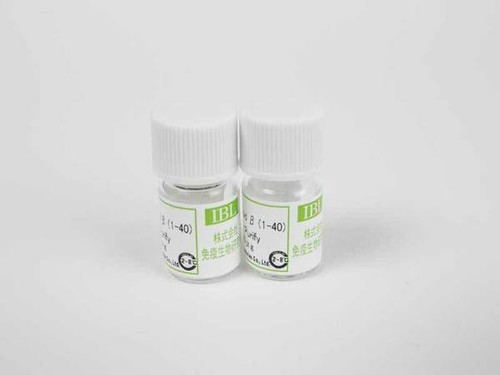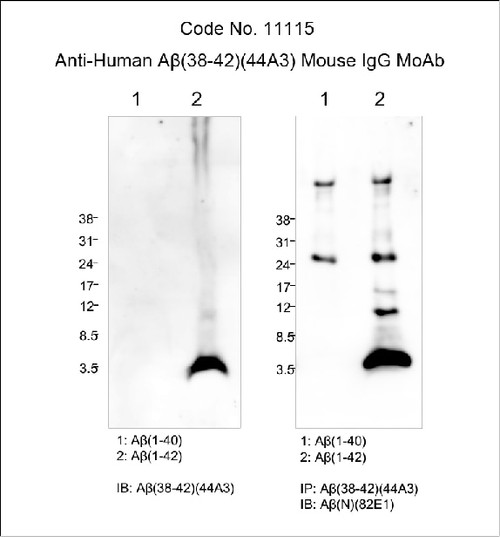The first case of Alzheimer's disease (AD) was reported by Dr. A. Alzheimer, the German neuropathologist in 1907. The plaques which appear in the brains of AD patients mostly consist of Amyloidβ protein and it has been considered as the major cause of AD. Amyloidβ is a peptide which consists of 40 to 43 amino acids peptide and it is produced by cleaving by β- and γ- secretase from the amyloid precursor protein (APP) which is a trans-membrane protein consists of 695, 751, or 770 amino acids. Human Amyloidβ (N3pE-42) in senile plaques was discovered by Saido et al. in 1995 as a new Amyloidβ molecule which is Amyloidβ 42 modified glutamate at the 3rd position of N-terminal to pyroglutamate and it has been focused its functions in research. For research use only, not for use in diagnostic procedures.
- application:
- WB, IHC
- Catalog number:
- 10045
- clone:
- 8E1
- concentration:
- 100 µg/mL
- Datasheet:
- formulation:
- Lyophilized product from 1% BSA in PBS containing 0.05% NaN3
- immunogen:
- Synthetic peptide for Human Amyloid (1-16) (DAEFRHDSGYEVHHQK)
- isotype:
- Mouse-Mouse hybridoma (supernatant) (X63-Ag8.653x—BALB/c mouse spleen cells)
- MSDS:
- notes:
- For research use only, not for use in diagnostic procedures.
The datasheet for this product (see above) is intended to serve as an example only. Please refer to the datasheet provided with the antibody for precise details. - Other names:
- Please see datasheet
- Protocol:
- size:
- 50 µg
- storage:
- Lyophilized product, 5 years at 2 - 8 °C; Solution, 2 years at -20 °C
- Species:
- Human
- Host:
- Mouse







